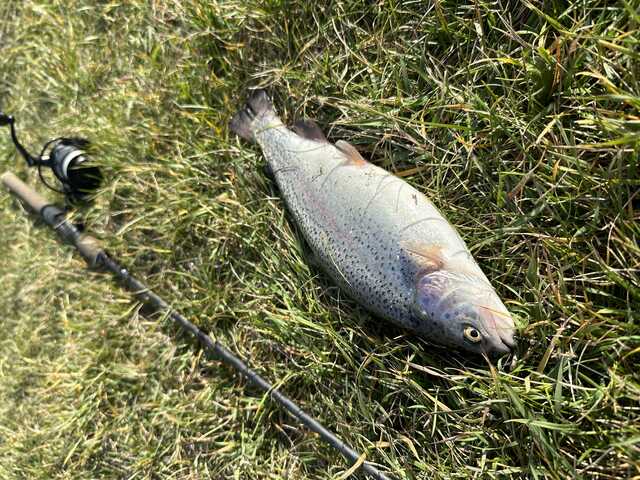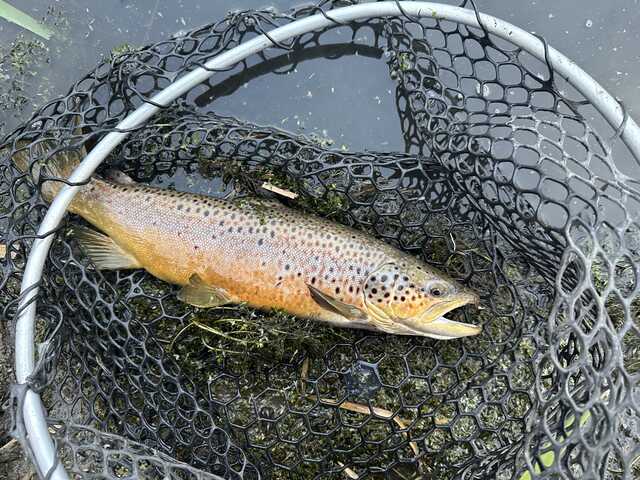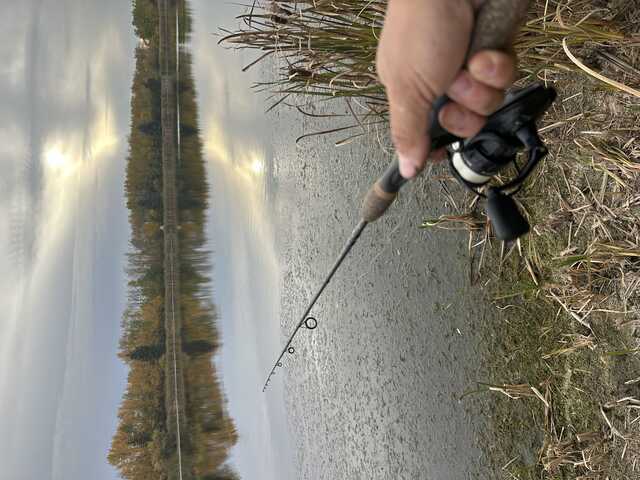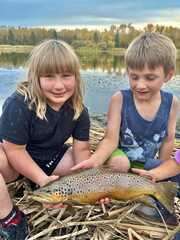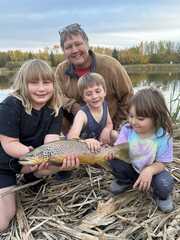It’s late in the season and my family and I are at our favourite trout pond, looking to squeeze out one more day of open water fishing before the water turns solid. The weather is cooperating and I would even go so far as to say that it is pleasant. It is a good day for fishing.
Gone though, are the days of great fishing and warm weather that often accompanies early fall, and they have been replaced with cool weather and cold water. As in, water temperatures that are not much different than when we are ice fishing. So this means a change in expectation and a change in presentation.
Trout, being cold-blooded, will slow down with the corresponding dump in water temperature. They don’t race about anymore, but instead, they do things more slowly. They forage more slowly, swim more slowly, and feed a little less frequently. To maximize our odds at catching fish, I slow things down too, to match the mood of the fish.
I also size down, and run light line. My trout set up is a light action 7 foot rod, and the reel is filled with thin, four pound test line. It’s a great trout combination that allows for sensitivity, plus an ability to cast a light rig a long ways. This is perfect when fishing for pond trout from shore.
My go to presentations are either fishing with bait, or fishing with flies, because either I can fish slowly, or dead still, which are extremely effective. If I had to choose one presentation to hang my hat on, it would be a small bobber with a beadhead nymph fished two to five feet below. I would fish the fly with no bait. But, if there are fish showing themselves by rising nearby, and I am not getting bites, I will sweeten the fly by adding on a very small, quarter to half inch of worm, or a couple of maggots.
On this day Cedar, Fraser, and I are walking along shore, watching the water. We see a fair few fish rising a short cast from shore at this one spot, so this is where we decide to fish. There is a very slight breeze that riffles the water. For my hook, I have a bead head prince nymph. To start with I am fishing it as is with no bait, about three feet under the bobber. Cedar and Fraser are doing the same.
On my very first cast the bobber dips below the surface and when I pull back, there's weight. A surprised and chunky rainbow races about and jumps trying to shake the hook. It takes a minute, but soon the rainbow is lying in the grass by my feet, kicking and squirming. It's a beautiful trout, thick, silver, and healthy. I take the hook out and let him go, where he darts off as soon as he touches the water.
But that is it. There are no more bites for any of us. So, hoping to improve our luck, I add a tiny piece of dew worm to the end of the fly. As in, about a quarter inch of worm. Now I cast the line out to where fish are showing themselves and I leave it there. It's a waiting game, and in time Cedar's bobber dives under and she hooks up to a twin of my first trout. She brings it to shore and just as she is lifting it out, the hook pops free and the rainbow auto releases itself.
The bite is encouraging and we get back to fishing. A few minutes later I get a bite and this turns into a little rainbow, which I bring in and quickly release. Fraser has enough of the slow bite though, so he carries off to the nearby playground with mom and little sister while Cedar and I start working our way around the shore, casting as we go.
We make our way down the shoreline, but where we are fishing the effects of the wind are non-existent. This area of the pond is flat calm and nothing is happening. So after trying for an hour, we decide it is better go back to where we started and fish in the little bit of breeze and ripples there, hoping for better results. When we get back, Cedar gets a good hit quickly. She sets the hook, only to have the bobber and fly pop out of the water and into the shoreline veg. We get that sorted and get back to fishing. Then of all things, I get a couple of determined hits, but they are on my bobber, and not the fly. It has me thinking about changing the length of my fly to only a few inches below the bobber. I've done this trick in the past and it has panned out.
While I'm contemplating my next move, Fraser and the rest of the family make their way to us. He asks to use the rod, which I happily hand over. First cast and the bobber shoots under. He reels into weight, and by the deepening bend in the rod I can quickly tell this is a good fish. “Good fish!” I announce at about the same time the trout breaks the surface and we get a splashy look. “A real good fish,” I add.
Cedar shakes her head, having spent all that time fishing for trout, only to have Fraser walk in and hook up on his first cast. She's happy for him, and grabs the net, waiting at the shore. Fraser is patient and lets the trout do his thing, splashing, and racing about. It takes a couple of minutes, and now the trout is tiring. Fraser is getting the fish close. Cedar reaches for the net and we all whoop and cheer as the fish goes in.
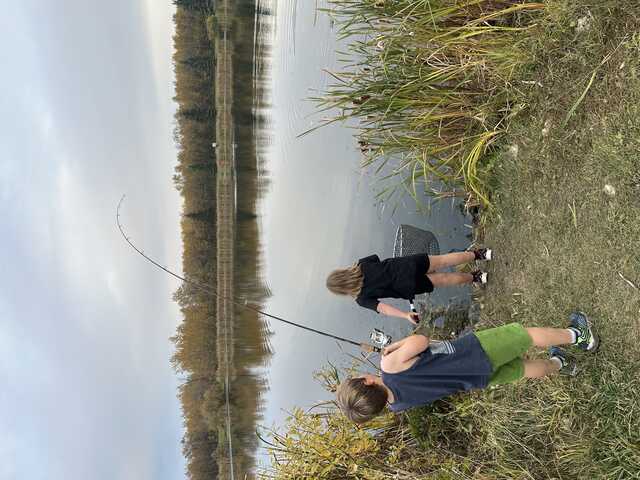

This is no ordinary pond trout. It's a brown trout, which we don't catch many of. Plus it's thick, and around 20 inches, a veritable giant for these waters. It is amazing. The kids couldn't be happier and proudly decide to bring it home for dinner, which turned out to be delicious. We fish for a bit more, but that is it for bites.
Happily we head home, and I smile, realizing that we got one more nice day outdoors before the water freezes, and we caught a beautiful trout that the entire family is proud off. It's a nice way to wind up and send off the open water season. Now we look forward to ice fishing, and bringing friends out to show them the fun and good fishing that can had when you venture out on the hard water.


